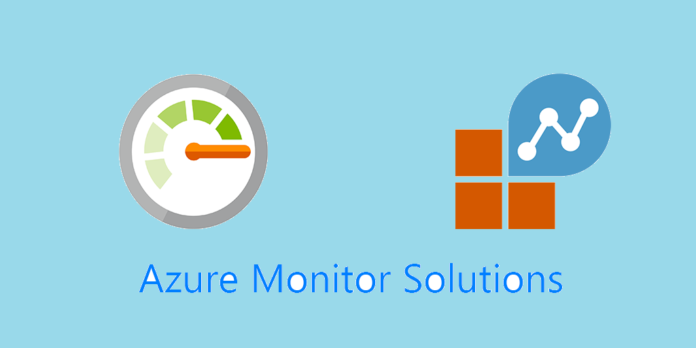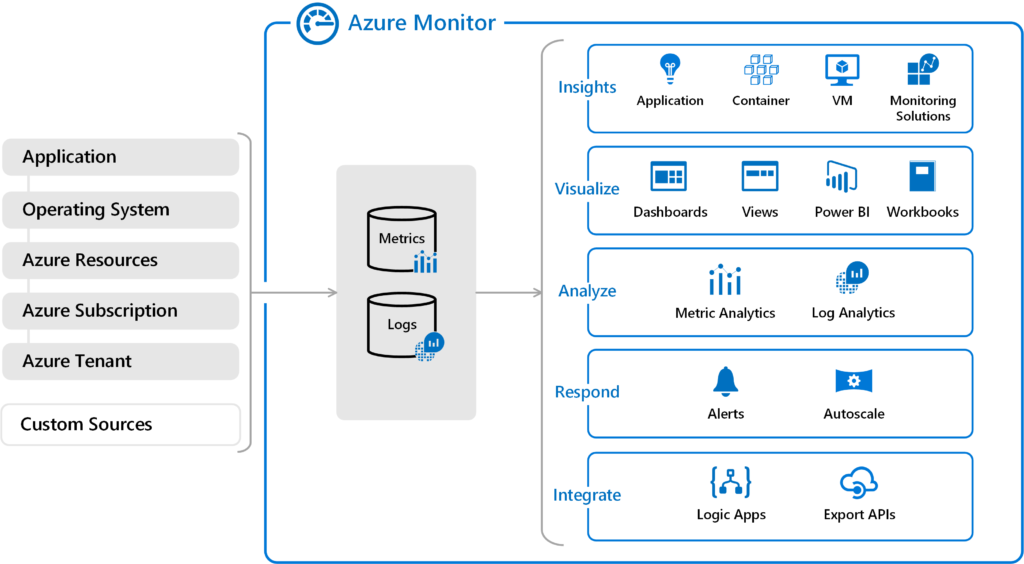Modern cloud-based software systems are complicated, and obtaining visibility into the health and performance of your application-hosting environment across all of its levels of services may be difficult. Fortunately, Microsoft offers a number of tools that can assist you in responding promptly to outages, researching intermittent issues, optimizing your consumption, and being proactive in dealing with future scheduled downtime.
You’ll learn about the many Microsoft monitoring options in this session, as well as the selection criteria that professionals use to choose the best service for a given case.
Identify your product options
There are many questions that companies have to face, such as, Are we making the best use of the cloud? Is it possible to get better performance from our cloud spending?
- Is it possible that we are overspending?
- Do we have sufficient security in place for our systems?
- What is the resiliency of our resources? Could we fail over to another area if we have a regional outage?
- How can we diagnose and resolve difficulties that arise on a regular basis?
- How can we rapidly figure out what’s causing an outage?
- How can we find out about scheduled downtime?
Microsoft has already provided answers to all of these queries., using a mix of Azure monitoring products,You can
- Verify that you’ve optimized your cloud consumption, get answers, insights, and warnings.
- Determine the source of any unanticipated difficulties.
- Prepare for scheduled disruptions ahead of time.
At a high level, there are three main Azure monitoring products, each of which is targeted at a different audience and use case and offers a different collection of tools, services, programmatic APIs, and other features.
Azure Advisor
Azure Advisor assesses your Azure resources and gives recommendations to help you enhance reliability, security, and performance, as well as achieve operational excellence and cost savings. Advisor is a tool that may help you save time when it comes to cloud optimization. The action suggestions in the recommendation service can be taken straight away, postponed, or dismissed.
The Advisor dashboard in the Azure portal offers customized suggestions for all of your subscriptions, and you can use filters to pick recommendations for individual subscriptions, resource groups, or services. The recommendations are classified into five groups:
- Reliability: Used to ensure and improve the availability of mission-critical applications.
- Security: Detects threats and vulnerabilities that might result in security breaches.
- Performance: Used to boost the performance of your apps.
- Cost: This is used to optimize and lower your total Azure cost.
- Operational Excellence: Used to assist you in achieving process and workflow efficiency, resource management, and best practices for deployment.
Azure Monitor
Azure Monitor is a platform for gathering, evaluating, displaying, and possibly acting on metric and logging data from across your entire Azure and on-premises environment.
The graphic below demonstrates how thorough Azure Monitor is.
- The sources of logging and metric data that may be gathered at each tier of your application architecture, from application to operating system and network, are listed on the left.
- The logging and metric data is kept in central repositories, as shown in the middle.
- The data is utilized in a variety of ways on the right. You can see real-time and historical performance across all layers of your architecture, as well as aggregated and comprehensive data. The data is presented at various levels for different audiences. The Azure Monitor Dashboard allows you to examine high-level reports or create custom views using Power BI and Kusto queries.
Azure Service Health
Azure Service Health gives you a tailored perspective of the health of the Azure services, regions, and resources on which you rely. The status.azure.com page, which only indicates serious issues that affect all Azure users, does not present the complete picture. However, Azure Service Health shows both significant and little, localized issues that affect you. Although service disruptions are uncommon, it is necessary to be prepared for the unexpected. You may configure notifications to assist you in triaging outages and planned maintenance. Following an outage, Service Health delivers formal incident reports, known as root cause analyses (RCAs), that you may share with stakeholders.
Service Health allows you to monitor a variety of event types:
- Service issues are difficulties in Azure, like outages, that are now affecting you. You may dive down to the impacted services, regions, and engineering team updates, as well as find options to communicate and track the most up-to-date information.
- Maintenance events might have an impact on your availability. You may dive down to the impacted services, geographies, and details to see how an event will affect you and what steps you should take. The majority of these occurrences have no bearing on you and are not depicted here. In the unlikely event that a reboot is necessary, Service Health allows you to schedule the maintenance to minimize downtime.
- Health advisories are issues that need you to take action in order to avoid service disruption, such as service retirements and major adjustments. Health warnings are issued long in advance so that you can plan ahead of time.
When to use Azure Monitoring services
- When you need an analysis of your deployed resources, use Azure Advisor. Based on professional best practices, Azure Advisor examines the setup and utilization of your resources and makes recommendations on how to optimize for dependability, security, performance, costs, and operations.
- Choose Azure Service Health if you wish to monitor Azure itself, particularly the services and regions on which you rely. You can see the current status of the Azure services on which you rely, as well as forthcoming planned outages and services that will be phased down. You may set up notifications to keep track of issues and future downtime without having to visit the dashboard on a frequent basis.
- When you wish to measure bespoke events with other acquired telemetry data, use Azure Monitor. Custom events, such as those introduced to the source code of your software applications, may aid in identifying and diagnosing why your program is acting as it does.
- You would use Azure Monitor to configure alerts for significant events pertaining to your individual resources.
The purpose of this lesson was to investigate numerous Azure monitoring service offers. Azure Advisor, Azure Monitor, and Azure Service Health were highlighted as product possibilities and their capabilities. For particular cases, we examined decision factors for selecting one alternative over another. Azure monitoring services offer a wide range of tools to help you enhance your cloud operations.











